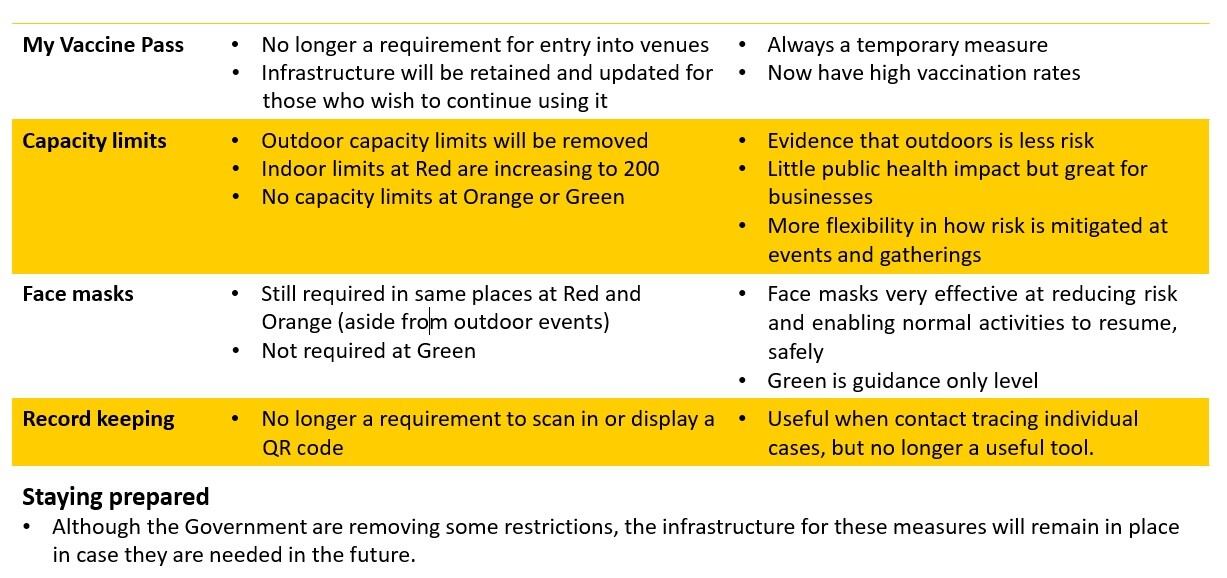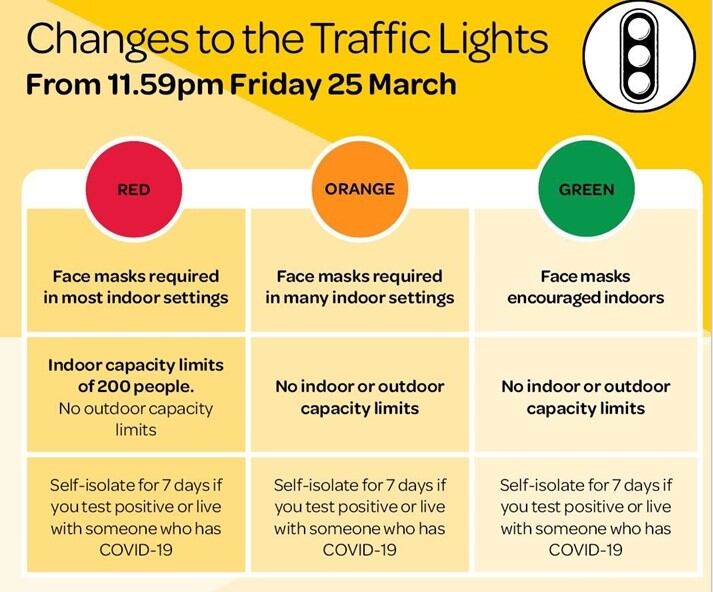By Māori Covid-19 Analyst Dr Rawiri Taonui, in partnership with Te Ao Māori News.
On Wednesday last week, Prime Minister Jacinda Ardern announced phased changes to the Covid traffic light system.
QR codes
Kiwis no longer need to scan QR codes. This is a sensible move. With 570,000 cases in the Omicron outbreak since February 1, contact tracing via QR codes is no longer feasible. The prime minister astutely qualified that the QR system could return should a new variant warrant it.
Mask wearing
The traffic light system will retain mask-wearing at red and orange settings. This is the right approach. Research shows mask-wearing reduces Covid infections by 50% or more.
Masks will be optional at outdoor events. With a seven-day average of 16,300 new cases per day, over 800 people in hospital and 20 deaths on Saturday, dispensing with mask-wearing at outdoor events is premature.
Indoor/Outdoor Events
Limits on indoor events will increase to 200. This is the right call for the hospitality sector with research showing transmission rates as low as 6% in seated restaurant settings. However, increasing that capacity without vaccine passports (see below) is less prudent because it removes the security of knowing that staff and those eating unmasked at the next table are also vaccinated.

The announcement to remove limits on outdoor events has positives and negatives. The return of school, local sports and community events will rebuild a sense of normality.
A return to full stadiums and optional mask-wearing for super rugby and other large sporting occasions is a gamble. Research in England and Wales has shown a link between large football events and increases in cases, hospitalisations and death rates.
A preferable course of action would have been to set percentage limits, such as 50% of stadium capacity with regular reviews synchronic with how Omicron trends. This would stimulate business while allowing the masked and unmasked to distance accordingly.
Netball, which sees an indoor doubling from 100 to 200 spectator attendees, would also have benefitted from a percentage of capacity criteria. A dispersed seated and sober crowd is by far safer than pubs and bars.
The removal of limits for outdoor concerts is risky with these events proven spreaders over the summer holidays.

Vaccine passes
From April 4, the government will no longer require My Vaccine Pass, the official announcement saying these were “always a temporary measure and are no longer required as we have very high vaccination rates.”
There are two issues here. Vaccine passes are a key to safety and security in an Omicron environment. Removing them is like recommending we not wear safety belts when driving under 50 kph.
The double-vaccination pass is, however, virtually redundant, not because of the vaccination rates the government cites, but because the double-dose of Pfizer affords less protection against Omicron than the third booster dose.
Under Omicron, we require booster vaccination passes. This offers the best combination of protection against infection, hospitalisation and death and the freedom to go about our day without the risk of harming others. A booster pass would also encourage the uptake of boosters, which are now stalling in some communities, in the same way the original vaccine passes stimulated double vaccinations last year.
Mandates
From April 4, vaccine mandates for education, the police and the NZ defence force will end, while those for health and disability, aged care, corrections and border workforces will remain in place.
Mandates were a necessary introduction last year to protect against the spread of the deadly Delta virus in key frontline and public-facing situations.
Unfortunately, mandates have become the bane of the pandemic response dividing friends and whānau principally because the government was unable to reconcile their statement that they would force no one to take a vaccine.
A forceful 'covidiocy' self-centredness, unable to intuit that the freedom to choose does not include a freedom to place others at risk, successfully exploited this contradiction via former police and defence personnel winning a High Court case and a toilet of a protest at parliament.
Labour will feel it has struck the right balance between evidence, cutting off future embarrassing litigation, and deflating the possibility of another protest herd arriving with ablutions in tow.
The decision to remove mandate vaccination in education is patently wrong. Opening schools in February when child vaccinations were just starting has been the vector by which cases spread into vulnerable communities with scores of schools reporting hundreds of cases.
The removal of the security for parents requiring teacher vaccinations is a blow for Māori and Pacific Peoples' communities whose children make up 66% of all under 12-year cases.
Evidence
The government predicated the traffic light changes as evidence-based, for example, saying “95% of New Zealanders are vaccinated” leaving just “180,000 unvaccinated”.
The 180,000 only refers to 12 years plus New Zealanders registered in the 2020 HSU (Health Service User Index). This excludes under-12-year-olds. The HSU also does not count those who do not use the health system, undercounts at least 41,000 Asian people and 50,000 Māori of all ages and is out of date compared to the latest population figures.
The NZ Statistics December 2021 estimate of the New Zealand population is 5,126,300. As of Friday 25 March, 4,298,900 New Zealanders aged over five years old had received at least one vaccine. At 83.9% of the population, which leaves over 827,000 New Zealanders unvaccinated; a huge pool for further transmission.
Vulnerable populations
The cumulative impact of recent changes, including border entry self-cognisance home isolation, lowering of the home isolation period to seven days, and now the removal of vaccine passes in education, premature upsizing of outdoor events and relaxing of mask-wearing, places Māori communities at risk.
The government has said that Auckland has already peaked and that the other DHBs would peak within the next fortnight. That may be, however, Omicron will have a long tail. Māori dominated the tail of the Delta and may do so again under Omicron. Māori are 51.3% of all deaths under 60 years and as of Saturday for the first time under Omicron the highest number of new cases and active cases per 100k of population.
The new measures also do not take account of the silent climb in cases of the 30% to 40% more infectious BA.2 Omicron sub-variant now replacing the BA.1 sub-variant that dominated the early phase of Omicron.
BA.2 is more infectious but not more lethal and antibodies from previous BA.1 infections work against BA.2.
However, the greater infectivity of BA.2 will allow it to penetrate much further into unvaccinated communities. Māori are squarely vulnerable. As of Saturday, just 63.9% or 520,160 Māori had received at least one vaccination. The December 2021 Māori population is 876,600 meaning that 316,337 Māori, including over 200,00 under 12-year-olds, are unvaccinated.
Living with Covid
Last week’s decisions were about living with a Covid-19 variant like Omicron. Some were evidence-based, others bowed to political and protest pressure. We have no idea what future variants hold.
The National Party opposition, far-right Act Party and 'clownvoy' dilettantes will point to Labour's decline in the polls and claim victory. Labour will feel they have done many of the right things, mollified possible flash-points and are back on track.
Let not vulnerable communities pay the price for anyone’s sense of triumph.
Kia noho haumaru, stay safe and self-sovereign.
Dr Rawiri Taonui

